NCECA Concurrent Exhibitions
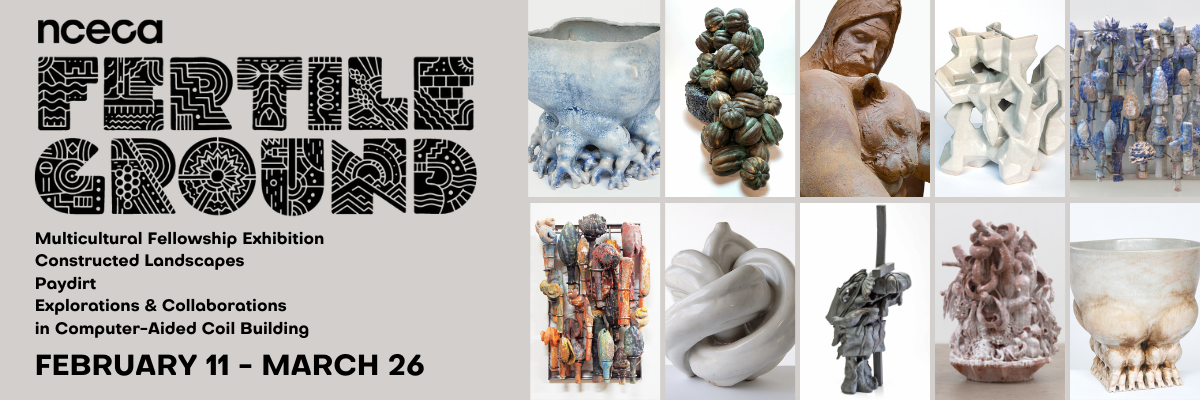
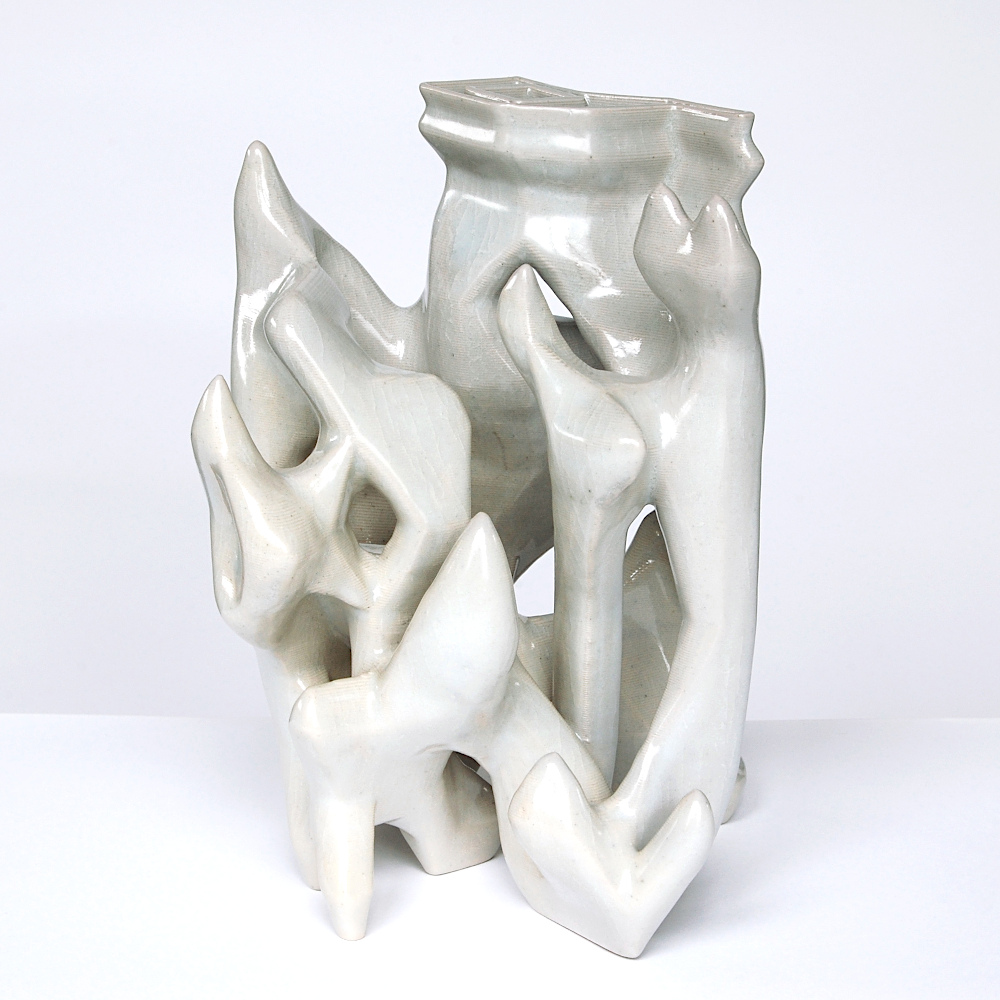
About NCECA Concurrent Exhibitions
The annual conference of the National Council on Education for the Ceramic Arts (NCECA) provides opportunities to build and strengthen professional networks and experience lifelong learning with friends, colleagues, mentors, and students. During the 2022 conference, lectures, demonstrations, networking opportunities, and engagement with vendors, nonprofit organizations, schools, and galleries will be available throughout the region.
During this time, Blue Line Arts will be featuring 4 Concurrent exhibitions in collaboration with NCECA, hosting guest curators and artist groups from around the world who are creating work with clay. Stop by to see their interpretations of this year's theme: Fertile Ground.
NCECA Multicultural Fellowship Exhibition
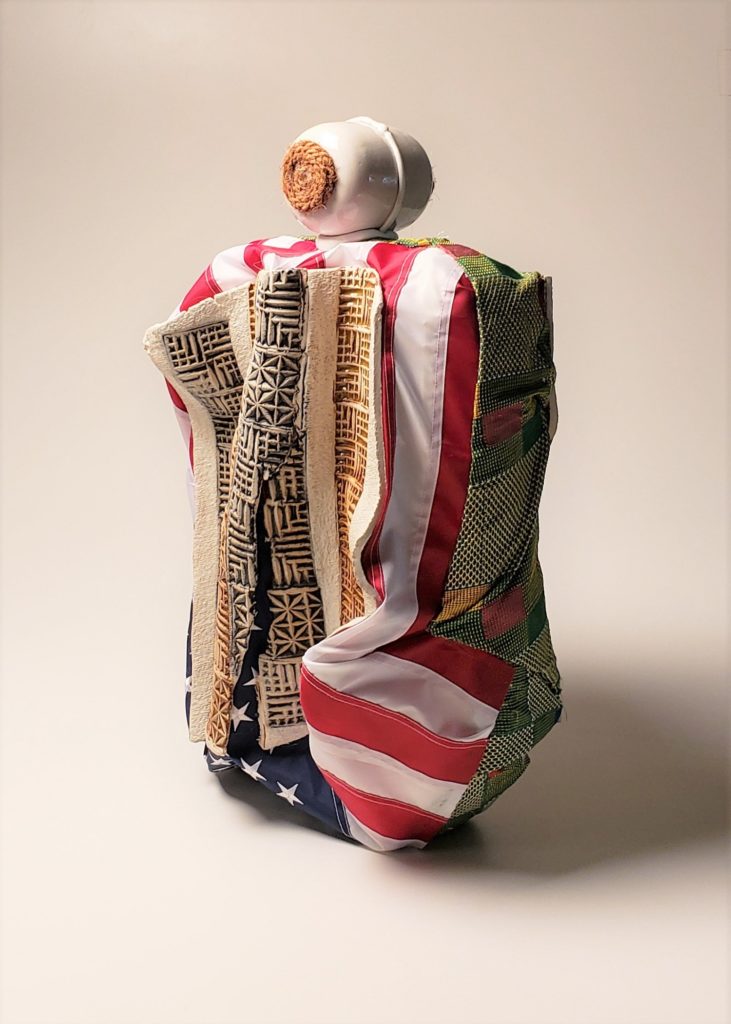
Japheth Asiedu-Kwarteng, I Miss You Dada
Stoneware, Kente cloth, and American Flag
Featured Artists
Abiam Alvarez, Japheth Asiedu-Kwarteng, Yael Braha, Summer Brooks, Grace Gittelman, Rika Kova, Walter Moore, Neha Pullarwar, Silvia Ritterling-Alvarez, Antra Sinha, Hye Rin Woo
The NCECA Multicultural Fellowship Exhibition is open to past recipients of NCECA’s Multicultural Fellowship. The eligible cohort includes artists based in the United States and abroad. NCECA Membership is not a requirement for participation.
About the Juror
Sana Musasama is an African-American ceramic and mixed-media artist based in New York City. Her artistic practice parallels her work as an educator and commitment to human rights causes especially the human trafficking of women. Her work has been recognized with numerous awards including an Anonymous Was a Woman Award in 2002, Joan Mitchell Painters and Sculptors Grant in 2013, and a Studio Museum in Harlem Artist-in-Residence in 1983–84. Musasama recently retired from teaching at Hunter College in New York and continues to be widely sought out as a mentor through informal educational programs, residencies, and workshops. She holds a BA in Ceramics and Education from City College (1974) and an MFA from Alfred State College of Ceramics (1987). She continued her ceramic studies at the Archie Bray Foundation in Helena, Montana; the Gakium Designer College in Tokyo, Japan; the Tuscarora International School of Ceramics in Tuscarora, Nevada; and at Mende Pottery in Mendeland, Sierra Leone.
Constructed Landscapes
Brick, Tile and Pillar
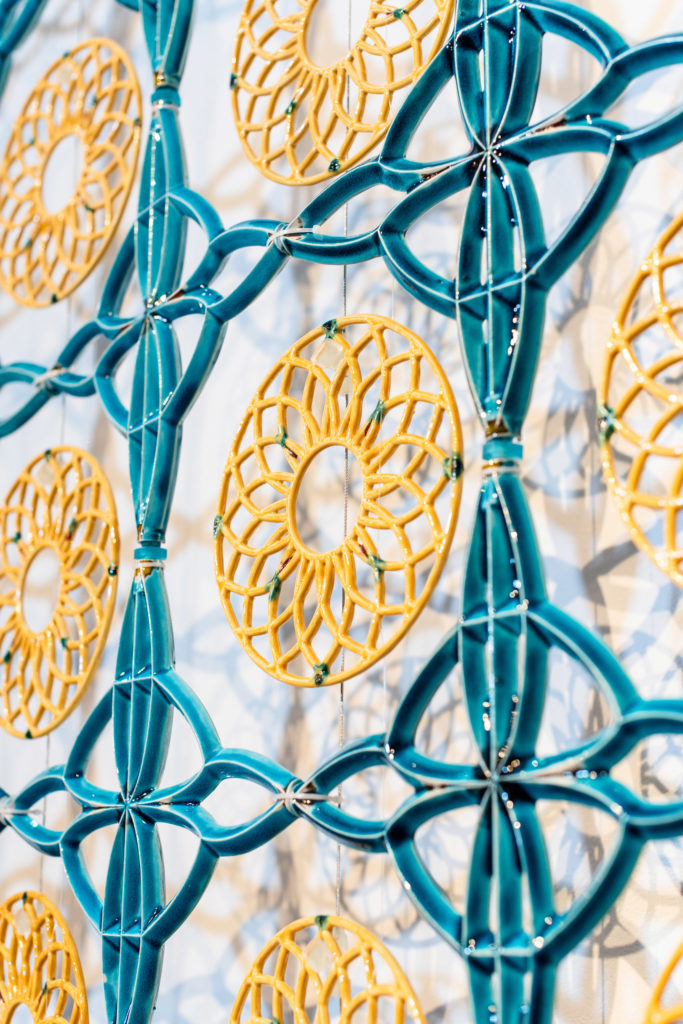
Eliza Au, Lattice Screen
Featured Artists
Eliza Au, Audrey Ann, Grace Nickel, Sarah Heitmeyer
From the Exhibition Concept, by organizer Eliza Au
This exhibition explores the interface between nature and culture through the liminal space of architecture. Through the modules of the brick, tile, and pillar, the artworks in this show explore architectural ornamentation influenced by natural forms and patterns, through mimicry and reproduction, as well as translation and re-adaptation. These characteristics are relevant to Michael Hann’s theory of diffusion, adoption, and adaptation, as outlined in his book, Symbol, Pattern & Symmetry. Originally applied to the evolution of cultural pattern motifs, it has been applied to this exhibition by relating diffusion to the acquisition of the natural object; adoption, a direct copy of its form; and adaptation, taking the form and abstracting it.
Plant-based or nature-based design, is apparent in the included works. The depictions of the arabesque, the mandala, and plant foliage show an underlying system of geometry and symmetry, which stem from the natural world.
The artists in this exhibition use digital processes to abstract architectural ornament by editing, selecting, and modifying images and forms. Through doing this, process and design act as a vehicle to convey authorship as well as individual and collective experiences.
Pay Dirt
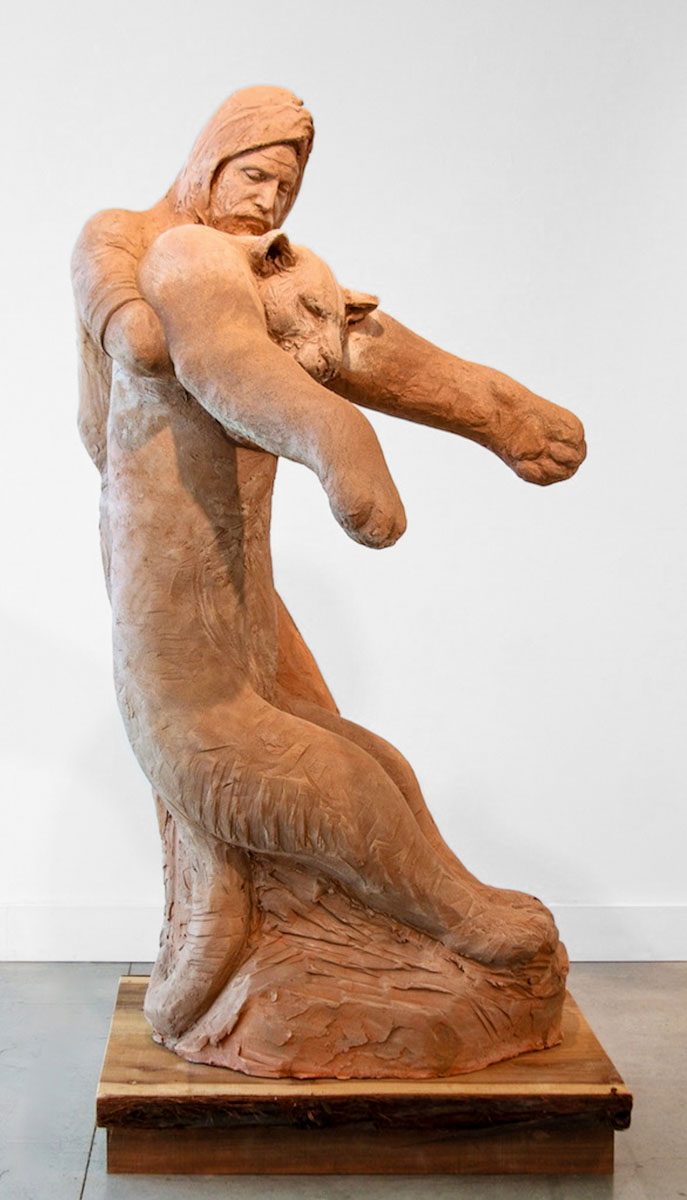
Lisa Reinertson, Deposition
Featured Artists
Abiam Alvarez, Monica Van den Dool, Stan Welsh, Lisa Reinertson, David Hicks, Ilana Crispi
From the Exhibition Concept, by organizer Monica van Den Dool
Pay dirt is a term coined during the California Gold Rush – when miners found flakes of gold glittering in the dregs of their pans or shovels, it meant they might soon be striking it rich, extracting their fortune from the rich California soil.
After thousands of years of Native American habitation, the subsequent decimation/occupation of Spanish Colonial period, and a period of Mexican control, the discovery of gold in the dirt just an hour from Sacramento earned statehood for California and precipitated the first of many new waves of immigration into the state. Drawn by the sense of possibility, the abundant natural resources, the fertile ground, the weather, the beaches, the landscape, the economy, the culture, the diversity, The Golden State’s mythical image solidified. People from all over the world came to the West Coast to find their luck, or make a new beginning, chasing a new California dream.
This dream was always both myth and reality, but there’s an increasingly pervasive feeling that living the California dream is much harder than it used to be. Residents endure overcrowding, spiraling heat waves, and choke on the smoke that now obscures our enviable views. Life in this cradle of the environmental movement has become increasingly tenuous, as the forces of climate change compromise our relationship to the land that brought us all to California. Still, the land remains undeniably enticing, uniquely beautiful and varied, the culture vibrant and progressive.
A few of the Pay Dirt artists have been here for generations, others are newer arrivals, but all are now Californians and deeply engaged with our unique environment in all its complexity. Their work alternately warns of the dangers ahead, takes in the views, celebrates the present, excavates the rich history or looks to the fragile future. They continue the work of that first early wave of miners, digging deep beneath the surface, sending down mine shafts, sifting, cultivating, surveying, walking and swimming through our California land and landscape, rummaging through the soil, extracting new nuggets of gold from the pay dirt of their clay.
Explorations and Collaborations
in Computer-Aided Coil Building
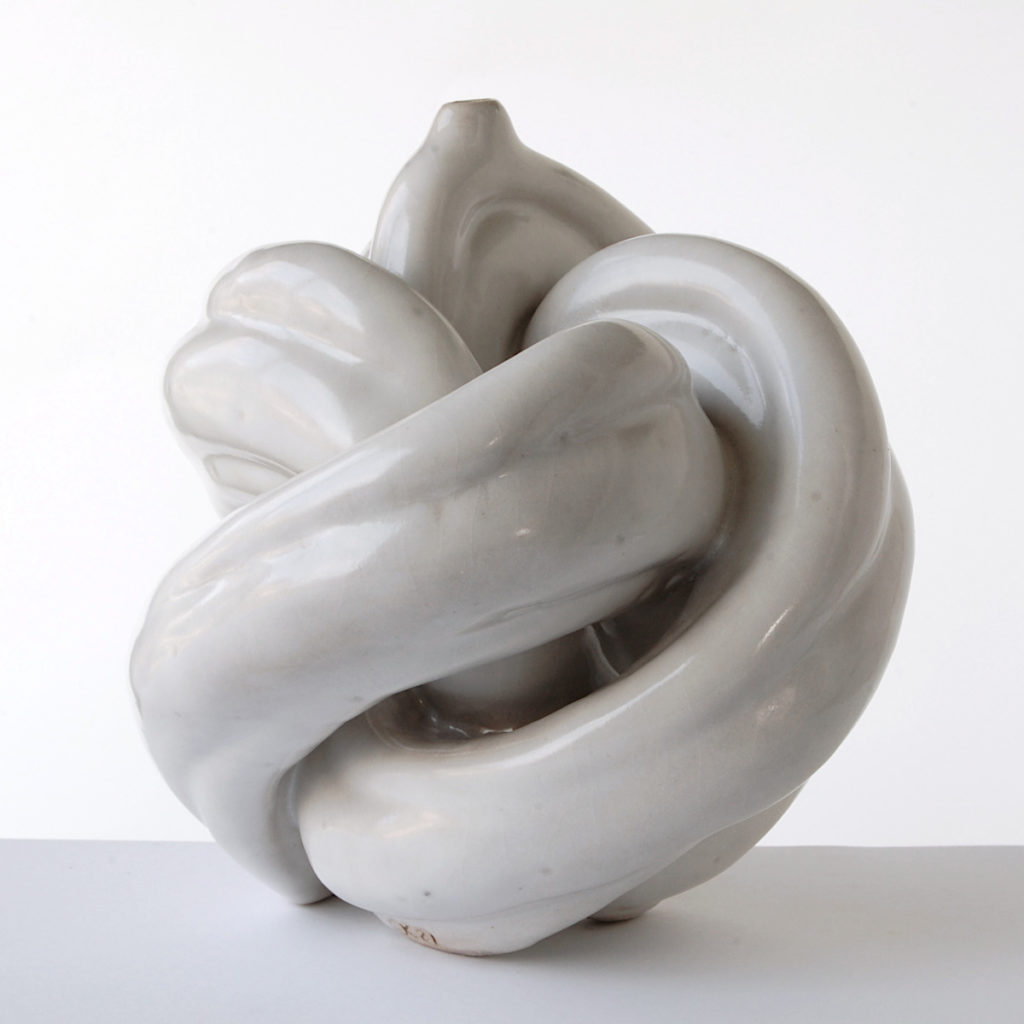
Jonathan Keep, Knot Series
Jonathan Keep (Suffolk, UK) & Tom Lauerman (Pennsylvania, USA) each worked with clay for many years prior to becoming interested in the potential of 3D printing. Jonathan as a potter, Tom as a sculptor. Each now uses printing as their principal means of creating, yet they take different approaches, with each building and developing custom tools to suit their individual trajectories as artists. Keep & Lauerman seek to expand the range of forms, textures, and resolutions associated with this nascent process.
The widely used historical forming techniques of ceramics: pinching, coiling, throwing, casting all go back millennia. To this august list can we now add 3D printing? Might it be more accurate to call this process “computer aided coil building?” Is this something entirely different from familiar methods, or just a modification of familiar coiling?
We are presently in a very early phase of the development of 3D printing techniques in ceramics. And yet, novelty is not what is driving Keep & Lauerman, and this is evidenced by their long engagement with the process, which seeks to connect with the histories of coil-built pottery and architectural blocks, bricks, and tiles.
Jonathan Keep’s work primarily grows from an examination of natural growth systems, while Tom Lauerman’s forms are rooted in an exploration of the cultural artifacts of constructed space, archeology, and the basic building blocks of architecture. Keep’s works are typically made of stoneware fired to higher temperatures in keeping with the artist’s studio pottery background while Lauerman’s work embraces earthenware materials and glazes, keen to make a connection in texture, color, and form with the use of ceramics in the built environment.
